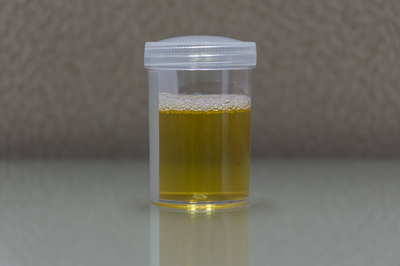Substance abuse in the workplace is a growing problem. Understanding the breadth and depth of the problem can help address it. Here’s a closer look at statistics everyone should know about workplace addiction, along with why substance abuse treatment can be an invaluable solution.
Workplace Addiction 101
As the epidemic of addiction continues to heighten its hold on the country, it should come as no surprise that addiction in the workplace is also on the rise. In fact, according to a report from Quest Diagnostics based on the analysis of millions of workforce urine test results as reported by EHS Today, more than 4 percent of all urine tests came back positive in recent findings — the highest rate since 2015.

Introducing urine testing at your company can not only help you identify users but can also be a vital business measure.
Cocaine use topped the list in terms of the rate of growth. Not only did it build on a four-year trend, but usage was up a full 12 percent from the previous year. Said Matt Nieman, General Counsel, Institute for a Drug-Free Workplace and Principal, Jackson Lewis P.C., “That positive test results for cocaine persist, let alone are increasing, should serve as a reminder to employers and employees that there is no substitute for vigilance in any effective effort to thwart the potential impacts of workplace substance abuse.”
However, cocaine was far from alone as a drug of choice for workers. Marijuana use also saw a noteworthy increase (which researchers largely attribute to its widespread legalization), as did methamphetamine. One bright spot in the findings? Driven by pushback against doctor-prescribed opiates, positive urine tests for prescription opiates as well as heroin continued to decline for the fourth year in a row.
Key Takeaways for Employers
While these statistics are alarming, they’re also accompanied by actionable insights for employers. Insists Dr. Barry Sample, senior director, science and technology, Quest Diagnostics, “This year’s findings are remarkable because they show increased rates of drug positivity for the most common illicit drugs across virtually all drug test specimen types and in all testing populations. Our analysis suggests that employers committed to creating a safe, drug-free work environment should be alert to the potential for drug use among the workforce.”
Still not convinced that drug testing is important for both a safe and successful work environment? Consider that employees of employers without drug testing programs have as much as 40 percent more self-reported drug use over a month-long period than those with them. In other words, workforce drug testing has an inverse relationship with drug use in the workplace. Concludes EHS Today, “As overall substance abuse rises across the United States, drug testing programs continue to play an important role in helping to create safe, drug-free workplaces.”

In many industries, workplace drug testing is a critical safety measure. In others, it’s a performance and productivity strategy.
When you factor in the degree to which substance abuse leads to the decline of performance, productivity, and morale in the workplace, the mandate to address the issue becomes even clearer. According to EHS Today, drug abuse cost employers $81 billion per year in 2014, an amount which has only grown over the past half-decade.
A drug testing policy is just the start when it comes to work-based initiatives aimed at curtailing workplace substance abuse and addiction. Employee assistance programs (EAPs) are also effective initiatives which can help you best support worker well-being as it pertains to substance abuse, treatment, and prevention. The takeaway? Drug testing employees, providing adequate resources, and encouraging them to take advantage of the many proven benefits of addiction treatment is a win-win for employees and employers alike.
If you or any of your loved ones are struggling with addiction, Harris House provides valuable partnership aimed at helping people struggling with substance abuse to reclaim their lives. Call us today to learn about admissions.







